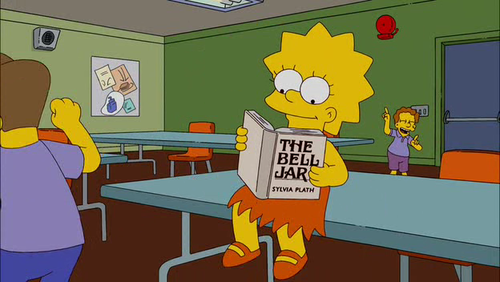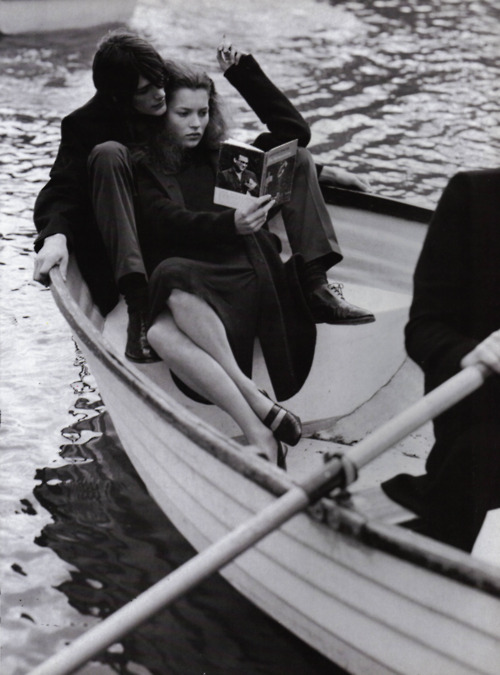 Allen Ginsberg. Photo credit: Elsa Dorfman
Allen Ginsberg. Photo credit: Elsa Dorfman
A Supermarket in California is a poem by American poet Allen Ginsberg first published in Howl and Other Poems in 1956. In the poem, the narrator imagines visiting a supermarket in California where he finds Federico García Lorca and Walt Whitman shopping
A Supermarket in California
What thoughts I have of you tonight, Walt Whitman, for
I walked down the sidestreets under the trees with a headache
self-conscious looking at the full moon.
In my hungry fatigue, and shopping for images, I went
into the neon fruit supermarket, dreaming of your enumerations!
What peaches and what penumbras! Whole families
shopping at night! Aisles full of husbands! Wives in the
avocados, babies in the tomatoes!–and you, Garcia Lorca, what
were you doing down by the watermelons?
I saw you, Walt Whitman, childless, lonely old grubber,
poking among the meats in the refrigerator and eyeing the grocery
boys.
I heard you asking questions of each: Who killed the
pork chops? What price bananas? Are you my Angel?
I wandered in and out of the brilliant stacks of cans
following you, and followed in my imagination by the store
detective.
We strode down the open corridors together in our
solitary fancy tasting artichokes, possessing every frozen
delicacy, and never passing the cashier.
Where are we going, Walt Whitman? The doors close in
an hour. Which way does your beard point tonight?
(I touch your book and dream of our odyssey in the
supermarket and feel absurd.)
Will we walk all night through solitary streets? The
trees add shade to shade, lights out in the houses, we’ll both be
lonely
Will we stroll dreaming of the lost America of love
past blue automobiles in driveways, home to our silent cottage?
Ah, dear father, graybeard, lonely old courage-teacher,
what America did you have when Charon quit poling his ferry and
you got out on a smoking bank and stood watching the boat
disappear on the black waters of Lethe?
 Ginsberg as portrayed by Richard Avedon
Ginsberg as portrayed by Richard Avedon
A Supermarket in California is both an ode to Ginsberg’s poetic hero and major influence, Walt Whitman, as well as an early experimentation with many of the themes that would dominate his work throughout his career. Whitman, who is considered to be America’s first original poet, was an early influence on Ginsberg’s writing. Whitman, a nineteenth century poet, experimented with meter and rhythm and eschewed the structured line and stanza which was the standard form for poetry of his time.

Whitman became known as an eccentric, both for his style of writing as well as his lifestyle. Whitman himself was greatly influenced by the Romantic poets and much of his poetry deals with nature and the encroachment of industrialized society on all that is natural and, in Whitman’s thought, good about America. Additionally, Whitman’s poems often glorified a sexually expressive mode of being, using veiled references to promote both a spiritual and sexual freedom. Like Howl, Whitman’s early poetry, including his most famous work, Leaves of Grass was considered pornographic and obscene by nineteenth century standards. Whitman himself is believed to have been homosexual or bisexual, though those assertions are sometimes challenged by modern Whitman scholarship.
Ginsberg sought to continue Whitman’s legacy stylistically and thematically. Ginsberg’s long line was inspired by Whitman’s use of varying lengths of line and breath. Thematically, Ginsberg sought to continue Whitman’s poetic assault upon industrialized society by writing about the consequences of corporate and industrial growth that Whitman could only foresee in his own work. A Supermarket in California, with its depictions of domesticated life symbolized by food placed out of its natural context, deals with such themes. Additionally, A Supermarket… also alludes to a hidden sexualized world, veiled in the language of commonplace things.
 A Note about Virginia Woolf’s To the Lighthouse
A Note about Virginia Woolf’s To the Lighthouse




























































